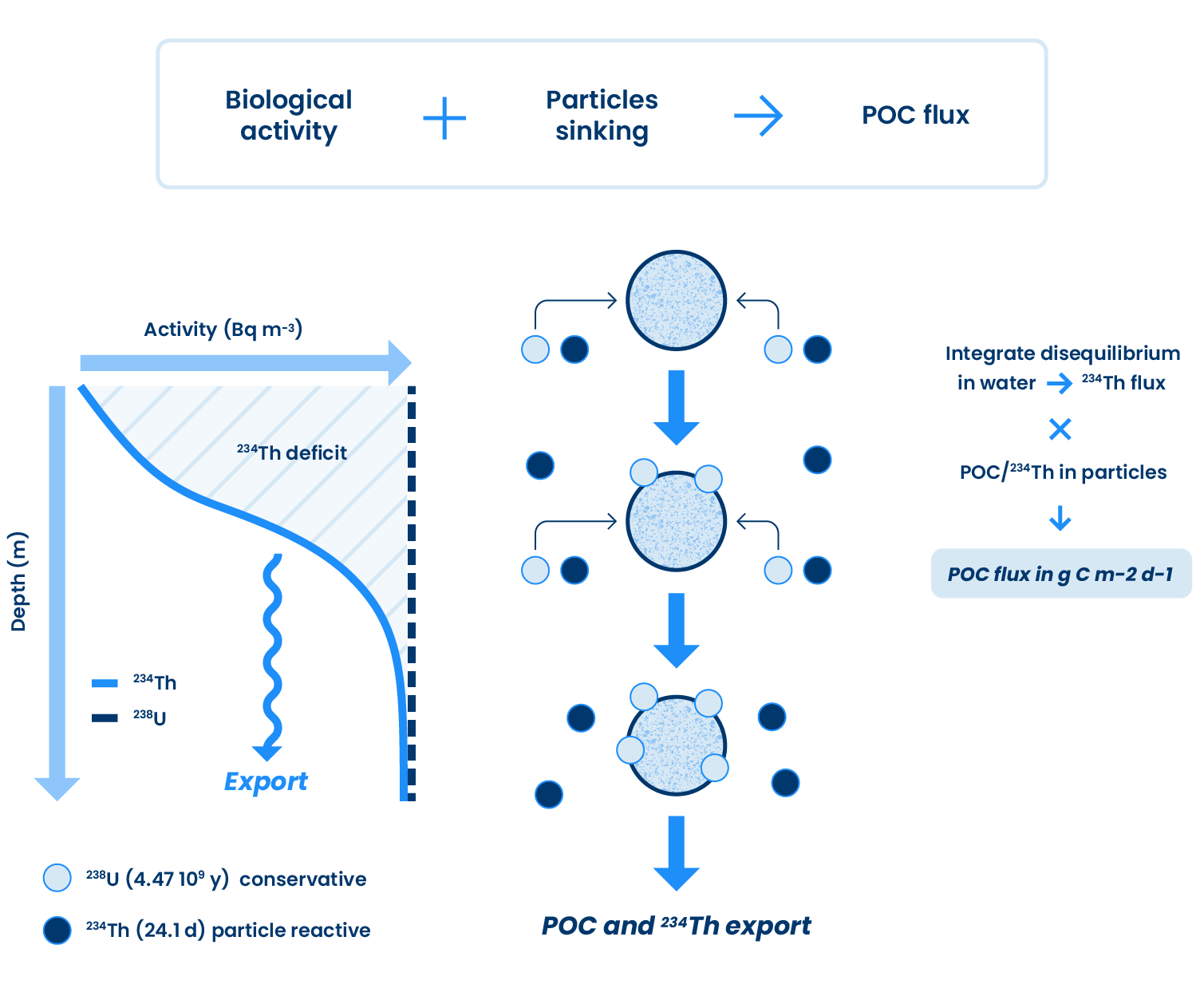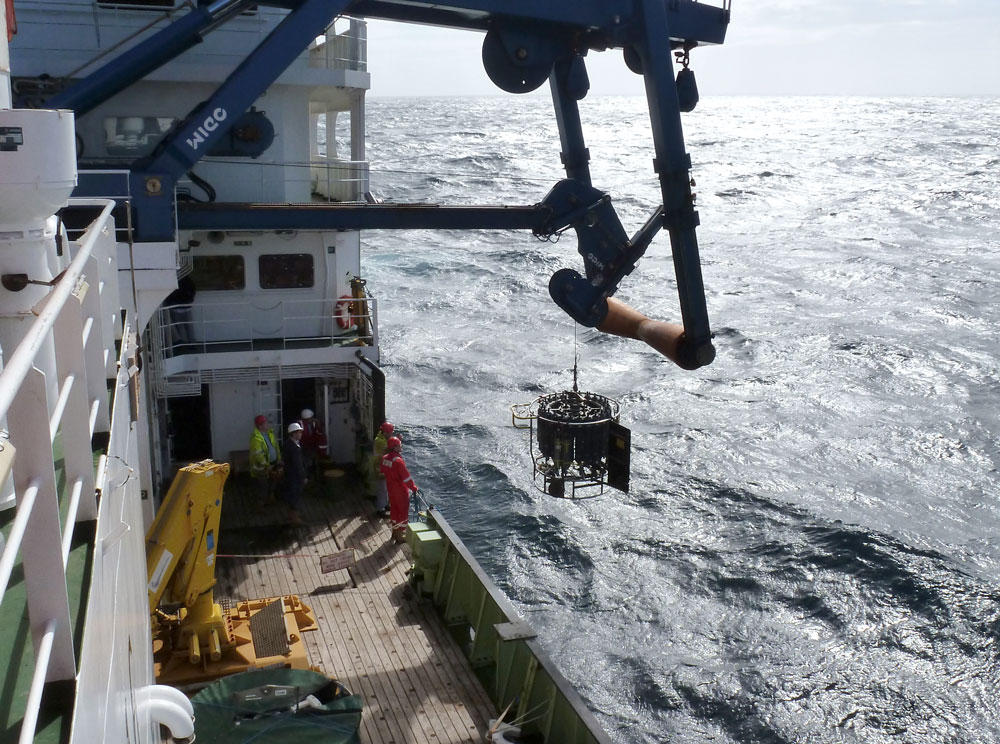
The oceans serve as crucial reservoirs for global carbon on Earth. The biological pump (BP) plays an important role in this storage. Primarily driven by the gravitational sinking of organic-rich particles from the upper ocean, the BP transfers gigatons of carbon to its interior every year. Consequently, this process influences the level of atmospheric carbon dioxide and the global climate system. Atmospheric carbon dioxide levels are significantly lower than would be in the absence of the BP.
An accurate evaluation of the carbon export flux is essential for estimating the magnitude of the BP and predicting its response to global climate change. . It is imperative to quantify the strength (i.e., magnitude) of the global BP in order to understand the Earth’s carbon cycle and the global temporal evolution of the atmospheric CO2 concentration, which is enhanced by anthropogenic releases. One of the key parameters to quantify the action of the BP is the downward flux of particulate organic matter, predominantly in the form of carbon
The measurement of the downward carbon flux is challenging and thus complementary approaches to estimate it are usually combined to estimate the carbon flux. The use of the disequilibrium of radioactive pairs, especially Th-234 - U-238, is one of the most popular methods.
The Th-234 - U-238 radioactive pair has been extensively used to evaluate downward carbon fluxes in the upper ocean, as well as the fluxes of other trace elements. Furthermore, it can be employed to evaluate other parameters, including the efficiency with which carbon is exported from the surface ocean via the BP, the remineralization of organic carbon, or the particle sinking velocity.
Since the 1970's, a large number of vertical profiles of Th-234 have been collected using a variety of sampling instruments and analytical strategies that have changed along years. Here we compile the most comprehensive global oceanic database of Th-234 measurements, including all Th-234 data in the published literature as well as unpublished data through 2023. Our data repository is accessible to the public and provides a valuable resource for researchers in the field.
The Method
The theoretical basis for the use of Th-234 in the ocean is as follows:
Uranium-238 (half-life = 4.5·109 years) is naturally dissolved in the ocean and decays into Thorium-234 (half-life = 24.1 days). Due to the contrasting radioactive half-lives of these two elements, they ultimately reach a state referred to as secular equilibrium, wherein the activity concentrations of both radionuclides are equivalent. However, when the euphotic zone is sampled, a deficit of Th-234 relative to U-238 is generally found. This is due to the fact that U-238 is soluble and remains dissolved in water, whereas Th-234 is highly particle-reactive so it is rapidly scavenged onto particles as they sink. The measured disequilibrium of U-238 and Th-234 in the shallower depths (0 - 500m) of the water column can be integrated at the specific depths where particulate organic carbon (POC) flux aims to be obtained to calculate Th-234 downward flux. This can be done either by assuming steady state or by applying a non-steady state correction to describe the temporal situation.

The technique's principal advantage is that the Th-234 downward flux can be converted to the downward flux of any element of interest, such as carbon, phosphorus or nitrogen, by using the ratio of the target element to Th-234 measured in the sinking particles. The most common use of the Th-234 flux is the estimation of the downward POC flux. Additionally, the equivalent fluxes of other components, such as particulate inorganic carbon (PIC), biogenic silica (BSi), or trace metals, can be obtained when they are measured in the sinking particles.

This way, when sampling a station, discrete water samples (typically 2 L) are collected at different depths using a stainless-steel sampling rosette equipped with Niskins bottles and a CTD Seabirds sensor package. Samples are measured for total and/or dissolved and particulate Th-234. U-238 is also measured at the same depths using ICP-MS or estimated using any of the U-238–salinity relationship available. Additionally, sinking particles are collected at discrete depths using a variety of methods (e.g., stand-alone pumps or sediment traps) and the Th-234 content in the particles is also measured, along with the POC content and other additional parameters (e.g., PIC).
Furthermore, these Th-234 – U-238 data can be used to analyze sinking particles remineralization (i.e., conversion of sinking to non-sinking particles) or the velocity of the sinking particles.